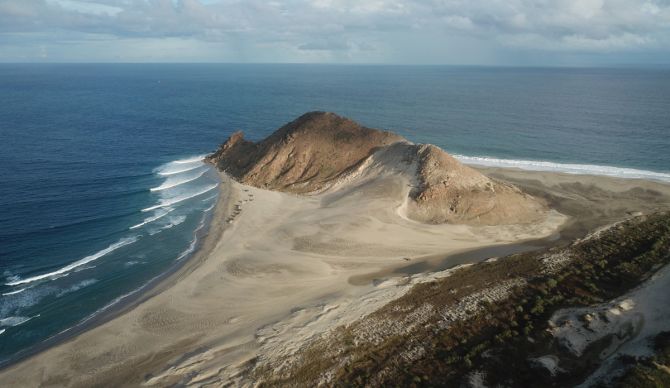
Punta Conejo, a proposed Surf Protected Area. Photo: Save the Waves / Uriel Camacho
Protecting surf breaks might be yet another tool in protecting the environment from man-made climate change and biodiversity loss. The findings come from a new study, published in Conservation Science and Practice and produced by a team of scientists from Conservation International and its Surf Conservation program, Oregon State University, Save The Waves Coalition and California State University at Channel Islands.
For the study, researchers analyzed over 4,800 popular surf spots across 113 countries. They found that the surrounding areas store nearly 90 million metric tons of “irrecoverable carbon,” a term coined by environmental non-profit Conservation International to refer to carbon-rich areas that are vulnerable to release from human activity. They also found that nearly a quarter of that irrecoverable carbon was within Key Biodiversity Areas, meaning locations that “contribute significantly to the global persistence of biodiversity.”
As a result, the study’s authors believe that expanding protection of surf ecosystems could be a tool to help stem the progress of climate change and biodiversity loss. One way to do this would be through Surf Protected Areas, sites developed by Conservation International and Save The Waves Coalition in order to establish legal protections for surf breaks from irresponsible tourism and development, forest and mangrove cutting, coral and sand mining, destructive fishing and plastic pollution.
“This research demonstrates the enormous role that protection of surf breaks and surrounding coastal areas can have in our global fight to reverse biodiversity loss and combat climate change,” said Scott Atkinson, senior director of surf conservation at Conservation International and an author of the study, to Phys.org.
“Our study shows where, exactly, we must now focus on legally protecting these areas. Surfers across the world are fantastic allies for efforts like this—they love the ocean, know that it is threatened and are extremely motivated to protect it.”

